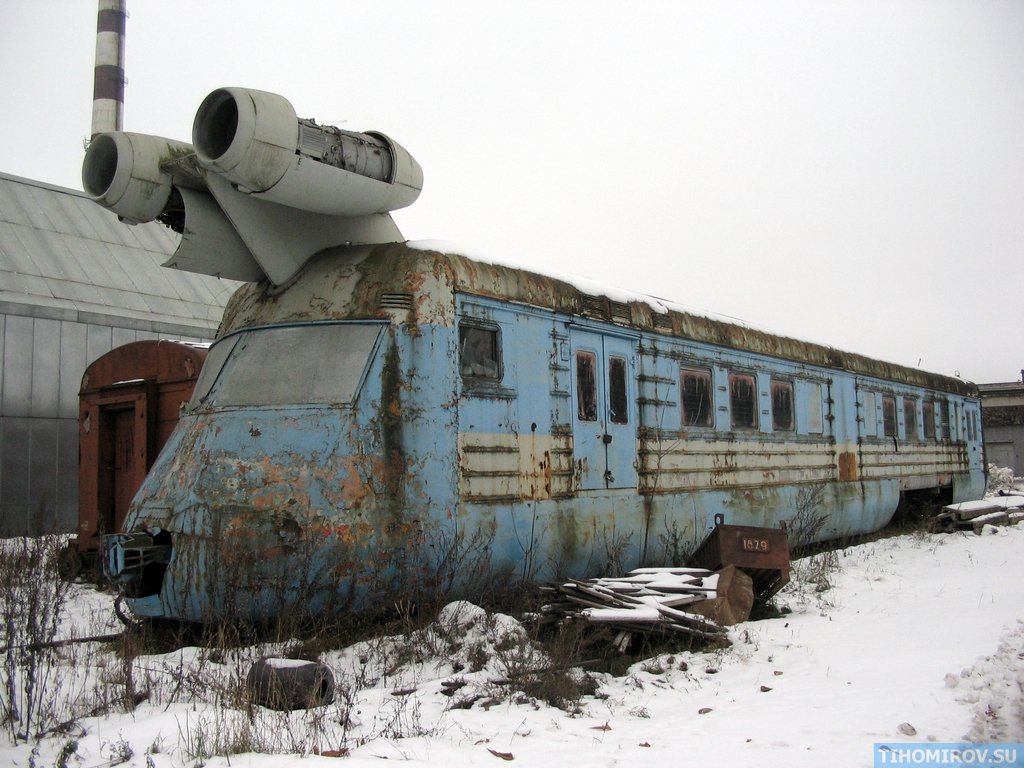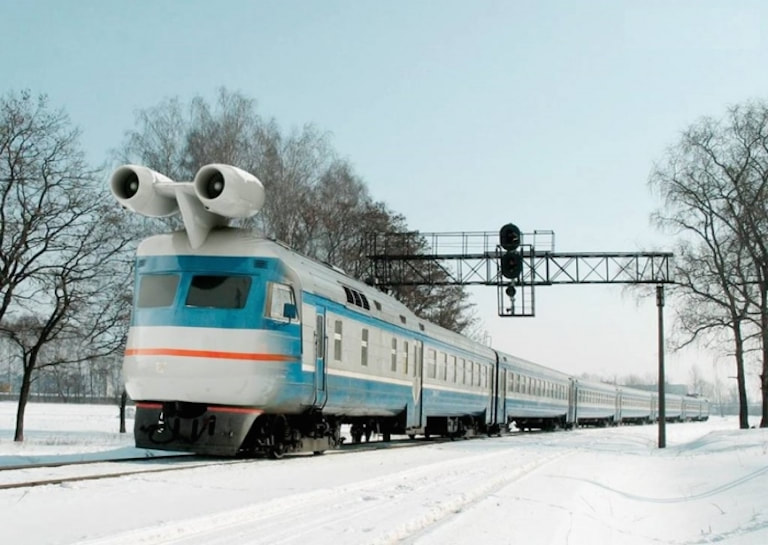In the 1960s, Don Wetzel, an engineer for the New York Central Railroad, was assigned the task to make locomotives both faster and cheaper, without compromising safety. The High-Speed Ground Transportation Act of 1965 granted the Federal Railway Administration funds to construct high-speed trains to convey passengers and freight.
Wetzel’s idea was to add jet engines to the train, so it would be propelled by jet thrust instead of the power of a gas turbine or coal-powered locomotive. During the refit of the engine car, Wetzel discovered that the jet engines worked better at higher speeds and applied his idea to passenger train engines before he modified the engines that pulled cargo.
Wetzel’s first attempt at a high-speed train was the M-497 Black Beetle, built in 1966. He used a Budd Rail Diesel Car and modified the front of the car for a sleeker, more modern look. He also added two recycled General Electric J47-19 5,000 horsepower jet engines purchased from the U.S. Air Force for $5,000.
Soon after, two Pratt & Whitney J52 jet engines were installed on the Linear Induction Motor Research Vehicle built by Garrett AiResearch, a groundbreaking aerospace technology firm and manufacturer of turbochargers and turboprop engines in California.
It is believed that the competitive spirit motivated the U.S.S.R. to build their own turbo train, at first to speed up the daily ride from Omsk to Tomsk, a distance of over 550 miles. The Soviets had already conducted considerable research into high-speed trains. The first experiments to began in the 1930s.
In 1970, Russian train makers in the Kalininsky district of Saint Petersburg redesigned and modernized the chassis of one of their ER22 head engines to look more streamlined and added two turbojet engines from a Yakovlev YAK-40 on the top of the front car, similar to the United States’ model. It weighed 5.4 tons fully loaded with jet fuel and reached 92 feet in length. The first test in 1971 was conducted on the line joining the railroad terminal in Golutvin, southeast of Moscow.
The goal was to get the train up to about 225 miles per hour, and at first, it achieved 116 miles per hour. After pushing the engine to its limit, the engineers reportedly got up to 155 miles per hour. It is thought that the creators of the train planned to make it part of the “Russian Troika Express.”
The project was discontinued, with the modified ER22 being the only model converted. The train engine was moved to an unused part of the track behind a rail car factory near Doroshikha and forgotten. As it sits in the weeds, rusting away, some want the locomotive restored and placed in a museum or sold to a private collector who has the ability to care for it.
It’s possible that the development of a high-speed train led to faster and more efficient train service in Russia as well as the rest of the world. A monument to the Turbojet train stands in Tver in a railcar factory.
tags : soviet jet train , jet train, turbo train, abandoned train , nathan finneman , breed of speed , awesome trains


 RSS Feed
RSS Feed